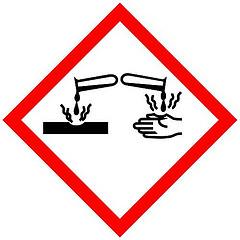PRINCIPLE OF THE TEST METHOD:
The substance to be tested is applied in a single dose to the skin of an experimental animal; untreated skin areas of the test animal serve as the control. The degree of irritation/corrosion is read and scored at specified intervals and is further described in order to provide a complete evaluation of the effects. The duration of the study should be sufficient to evaluate the reversibility or irreversibility of the effects observed. Animals showing continuing signs of severe distress and/or pain at any stage of the test should be humanely killed, and the substance assessed accordingly. Criteria for making the decision to humanely kill moribund and severely suffering animals can be found in reference.
PREPARATION OF THE ANIMALS:
Approximately 24 hours before the test, fur should be removed by closely clipping the dorsal area of the trunk of the animals. Care should be taken to avoid abrading the skin, and only animals with healthy, intact skin should be used.
APLICATION OF THE TEST SUBSTANCE:
The test substance should be applied to a small area (approximately 6 cm2) of skin and covered with a gauzepatch, which is held in place with non-irritating tape. In cases in which direct application is not possible (e.g.,liquids or some pastes), the test substance should first be applied to the gauze patch, which is then applied to the skin. The patch should be loosely held in contact with the skin by means of a suitable semi-occlusive dressingfor the duration of the exposure period. If the test substance is applied to the patch, it should be attached to the skin in such a manner that there is good contact and uniform distribution of the substance on the skin. Access by the animal to the patch and ingestion or inhalation of the test substance should be prevented.Liquid test substances are generally used undiluted. When testing solids (which may be pulverised, if considered necessary), the test substance should be moistened with the smallest amount of water (or, where necessary, of another suitable vehicle) sufficient to ensure good skin contact. When vehicles other than water are used, the potential influence of the vehicle on irritation of the skin by the test substance should be minimal, if any. At the end of the exposure period, which is normally 4 hours, residual test substance should be removed, where practicable, using water or an appropriate solvent without altering the existing response or the integrity of the epidermis.
OBSERVATION PERIOD:
The duration of the observation period should be sufficient to evaluate fully the reversibility of the effects observed. However, the experiment should be terminated at any time that the animal shows continuing signs of severe pain or distress. To determine the reversibility of effects, the animals should be observed up to 14 days after removal of the patches. If reversibility is seen before 14 days, the experiment should be terminated at that time.
THE EVALUATION OF RESULTS:
The dermal irritation scores should be evaluated in conjunction with the nature and severity of lesions, and the irreversibility or lack of reversibility. The individual scores do not represent an absolute standard for the irritant properties of a material, as other effects of the test material are also evaluated. Instead, individual scores should be viewed as reference values, which need to be evaluated in combination with all other observations from the study. Reversibility of dermal lesions should be considered in evaluating irritant responses. When responses such asalopecia (limited area), hyperkeratosis, hyperplasia and scaling, persist to the end of the 14-day observationperiod, the test substance should be considered an irritant.
